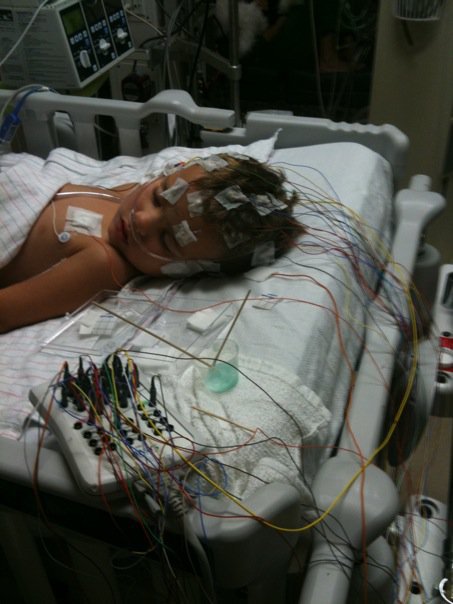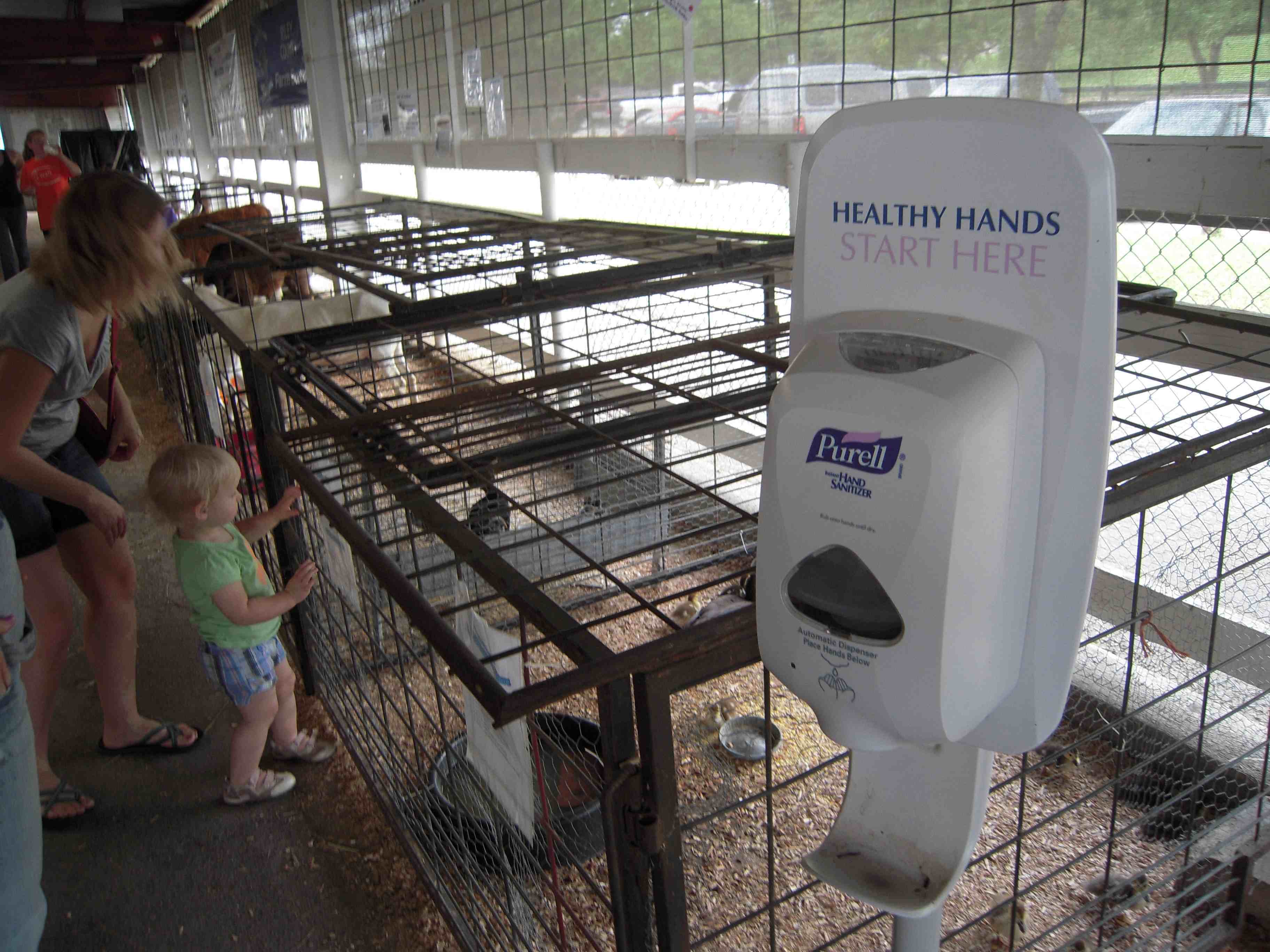A bunch of us went to the Riley County Fair Sunday morning (that’s in Manhattan, Kansas) so we could wander around the animals without too many people around.
 We’ve done this before, but now there are a couple of public health students interested in doing some formal work to decrease the risk of dangerous bugs passing from animals to humans, or humans to animals, so we introduced them to the petting zoo/fair concept, and the hygiene measures available.
We’ve done this before, but now there are a couple of public health students interested in doing some formal work to decrease the risk of dangerous bugs passing from animals to humans, or humans to animals, so we introduced them to the petting zoo/fair concept, and the hygiene measures available.
KWTX.com reports that Derek Scott “Bubba” Kirby, 3, of Goldthwaite, Texas (above, right), has been fighting for his life for several weeks at Dell Children’s Medical Center in Austin, will be transferred Monday or Tuesday to Texas Children’s Hospital in Houston where he can receive more specialized care.
The story says that Bubba contracted E. coli from the floor of a rodeo arena after he ended up with a mouthful of dirt when he was thrown from a sheep during a mutton-busting event and then developed serious complications that caused his kidneys to shut down and led to a stroke.
?? In 1999, 159 people, mainly children, were sickened with E. coli O157:H7 traced to goat and sheep at the 1999 Western Fair in London, Ontario (that’s in Canada). Scott Weese, a clinical studies professor at the University of Guelph (that’s also in Canada) and colleagues reported in the July 2007 edition of Clinical Infectious Diseases that in a study of 36 petting zoos in Ontario between May and October of 2006, they observed infrequent hand washing, food sold and consumed near the animals, and children being allowed to drink bottles or suck on pacifiers in the petting area..
In 1999, 159 people, mainly children, were sickened with E. coli O157:H7 traced to goat and sheep at the 1999 Western Fair in London, Ontario (that’s in Canada). Scott Weese, a clinical studies professor at the University of Guelph (that’s also in Canada) and colleagues reported in the July 2007 edition of Clinical Infectious Diseases that in a study of 36 petting zoos in Ontario between May and October of 2006, they observed infrequent hand washing, food sold and consumed near the animals, and children being allowed to drink bottles or suck on pacifiers in the petting area..
Weese noted that risk can be significantly reduced by locating hand-washing stations at the exit of a petting zoo, posting signs promoting good hygiene and educating people about the risks of bringing food, beverages or items that may end up in a child’s mouth into the zoo.
Such measures echo recommendations issued in 2001 by the U.S. Centers for Disease Control and Prevention. Unfortunately these reports and recommendations do not offer advice on how to ensure that fair operators are actually doing what they are supposed to be doing.
In 2003, U.S. researchers, in a study of livestock at 29 county and 3 large state agricultural fairs, found E. coli O157:H7 in 13.8 per cent of beef cattle, 5.9 per cent of dairy cattle, 3.6 per cent of pigs, 5.2 per cent of sheep, and 2.8 per cent of goats. Over seven percent of pest fly pools also tested positive for E. coli O157:H7.
The bad bugs are there and handwashing may not be enough to get rid of them.
The E. coli O157:H7 that sickened 82 people in 2002 at the Lane County Fair in Oregon appears to have spread through the air inside the goat and sheep expo hall. In a case-controlled study, health investigators found that the percentage of sick people who washed their hands after leaving the Lane County animal barns — 31 percent — was only slightly lower than the percentage of healthy people who washed their hands — 36 percent. In other words those who washed their hands were at almost the same risk of contracting E. coli, O157:H7. One child sickened at the fair, 23-month-old Carson Walter of Eugene, spent a month at Doernbecher Children’s Hospital before coming home.
 So, how best to motivate fair managers to provide petting zoos that are microbiologically safe? Should the urban public be allowed to interact with livestock at all? Should petting zoos be inspected, as restaurants are, and the results displayed? We’ll be looking, and hoping that Bubba improves. Bubba has his own Facebook page at http://www.facebook.com/pages/BUBBAS-ANGELS/141182275896304.
So, how best to motivate fair managers to provide petting zoos that are microbiologically safe? Should the urban public be allowed to interact with livestock at all? Should petting zoos be inspected, as restaurants are, and the results displayed? We’ll be looking, and hoping that Bubba improves. Bubba has his own Facebook page at http://www.facebook.com/pages/BUBBAS-ANGELS/141182275896304.
A table of petting outbreaks is available at http://bites.ksu.edu/petting-zoos-outbreaks-1988-2009.
